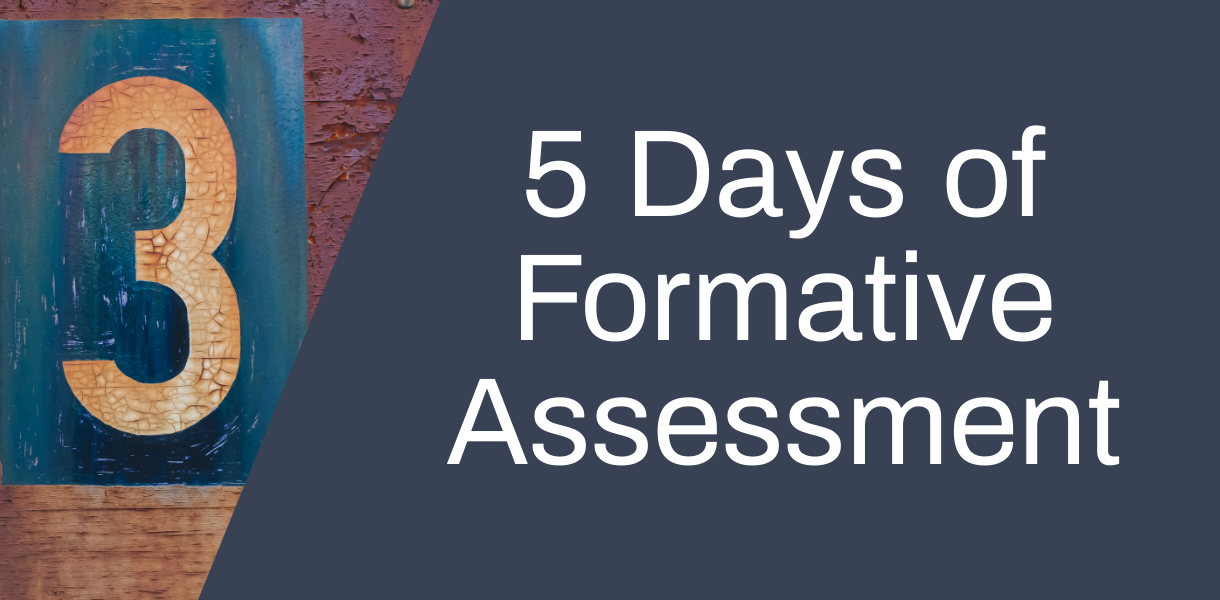
In day 3 of our 5 Days of Formative Assessment series, we will look at how you can use Peer feedback as a type of formative assessment.
FORMATIVE ASSESSMENT OR “ASSESSMENT FOR LEARNING”
Formative assessment or “assessment for learning” are terms that are being used interchangeably. The primary purpose of assessment for learning/formative assessment is to provide feedback to students. In a wider context it can motivate students to self regulate their learning, positively influence students’ self efficacy, improve meta-cognitive skills and develop their skills as lifelong learners. AFL activities can help students structure their independent work in ways which meaningfully relate to assessed work and that will beneficially effect achievement and success. It can also help them to learn how to manage their time.
Peer Feedback
Within Moodle, there are two activity tool types you can use to help you facilitate effective peer feedback: Moodle Workshop and Turnitin PeerMark.
Both these tools enable students to submit work and receive comments and feedback from other students and also provide feedback to other students on their work.
There are numerous benefits to using peer feedback activities as part of your teaching. By setting up a well-considered peer feedback activity, it is possible to encourage students to engage better with assessment criteria and to enter into more of a dialogue with teaching staff over feedback. It also provides each student with more feedback than could have been provided by the tutor only.
According to Jisc (2015) by allowing peer feedback/assessment “students develop critical thinking skills and make evaluative judgements based on the assignment criteria. In giving and receiving feedback, students develop skills that help prepare them for future professional practice and helps them understand the process of making academic judgements.”
Things to consider when setting up a peer feedback activity.
- Introduce peer-feedback early in the semester to allow for students to develop their skills as they go along.
- Introduce peer feedback activities as a way of introducing a summative assessment to allow students to actively engage with the marking criteria before they submit the summative piece.
Moodle Workshop
The Workshop Activity can seem a bit complicated to set up and manage at the start. After the initial set up of creating the activity, there are five further steps or phases that you and/or your students would work through.
The first phase is the setup phase where you will have to finalise the initial setup settings. The next phase is the submission phase where all students submit their own work. The third phase is the assessment phase, where students are allocated one or a number of submissions which they must asses. Providing clear guidelines on giving effective feedback, using a rubric and giving an example will help students make most use of this activity.
The next phase is called the grading evaluation phase. This is where assessments are evaluated and grades are calculated. (You can get a grade for submission and a grade for the assessment) both grades can be found in the Gradebook.
The final phase is the closed phase, and is when the grades and feedback are released to the student.
For more information see the guides below
Turnitin PeerMark
Turnitin PeerMark is a peer assessment activity that features in a Turnitin activity. As with the Workshop activity in Moodle, you can create and manage PeerMark assignments that allow students to submit, review and assess one or more assignments that have been submitted by their classmates. Reviews can be anonymous.
The basic stages of the peer review process:
- Tutor creates a Turnitin paper assignment.
- Tutor creates a PeerMark assignment and sets the number of papers students will be required to review, and creates free response and scale questions for students to respond to while reviewing papers.
- Student papers are submitted to the Turnitin assignment.
- On the PeerMark assignment start date, students begin writing peer reviews.
- For each assigned paper students write reviews by responding to the free response and scale questions.
- Students receive reviews as other students complete them.
- Once the PeerMark assignment due date passes no more reviews can be written, completed, or edited by the writer
For more guidance, see the guides below.
Guides
How to Create a Moodle Workshop Activity Part 1- The Initial Setup
How to Create a Moodle Workshop Activity Part 2 – The Five Phases of the Workshop activity
Turnitin PeerMark – Setting up Assignments
Turnitin PeerMark – Accessing Reviews
For more information on the Moodle Workshop activity see the Moodle.org guides
For more information on Turnitin PeerMark see the Turnitin help guides
Case Studies
Sam Yoward and Wayne Fiddler discuss how they have used the Moodle Workshop activity for peer assessment See Peer Assessment through the Workshop Activity case study
Useful links
https://www.jisc.ac.uk/guides/transforming-assessment-and-feedback/peer-assessment
https://phil-race.co.uk/wp-content/uploads/Self,_peer_and_group_assessment.pdf
If you would like to use peer assessment as part of your module, please get in touch with the TEL Team via the Staff IT Help portal: https://staff.help.yorksj.ac.uk/ or if you use peer assessment in your module and would like to contribute to a case study, please contact TEL.

0 responses on "5 Days of Formative Assessment Day 3: Peer Feedback"